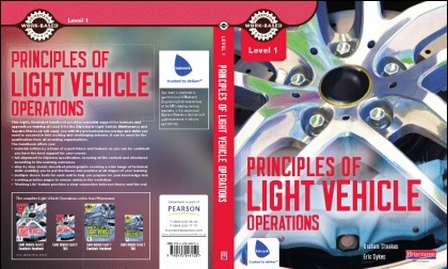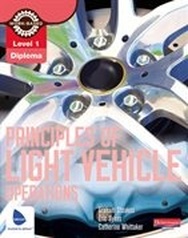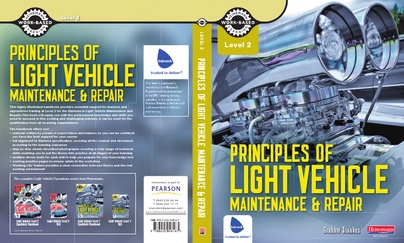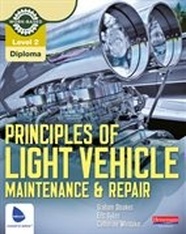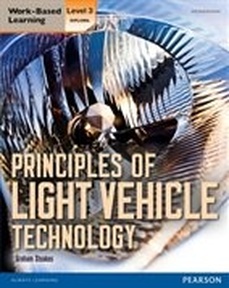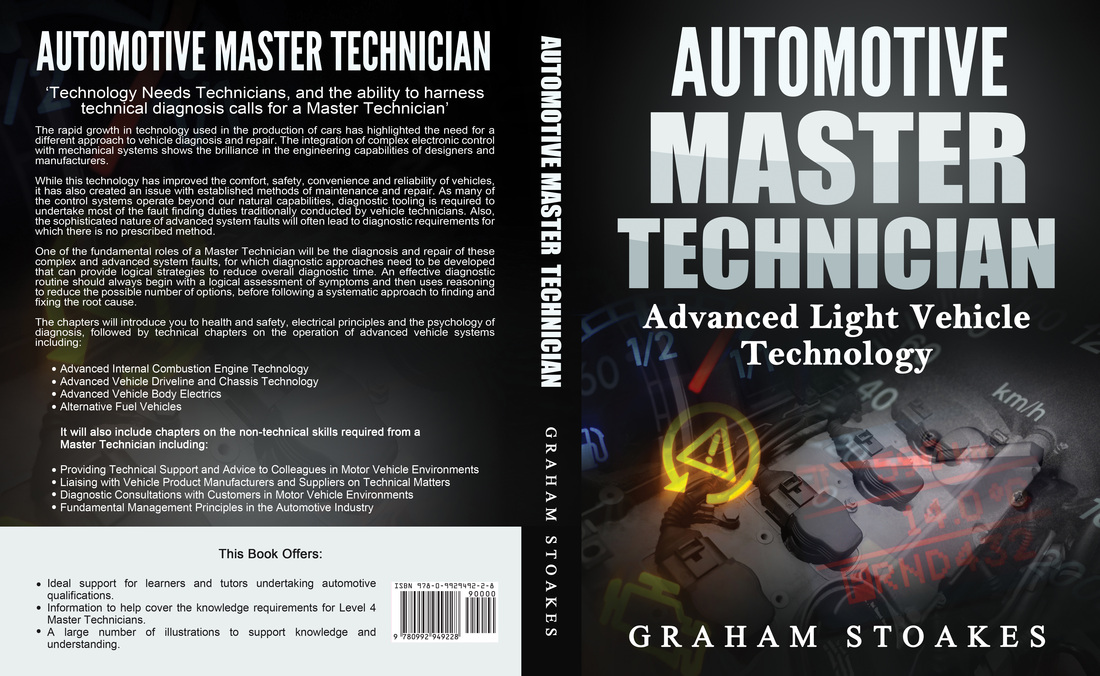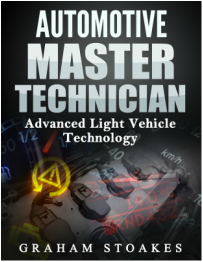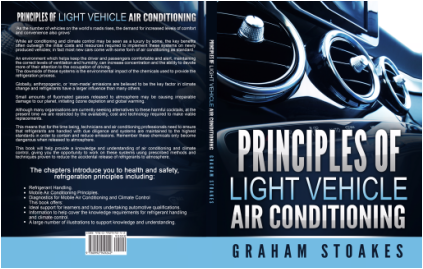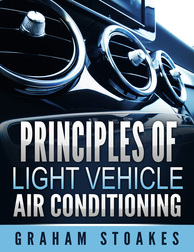|
Product details
Paperback: 336 pages Publisher: Heinemann; 1 edition (11 Oct 2011) Language: English ISBN-10: 0435048155 ISBN-13: 978-0435048150 Product Dimensions: 22 x 27.6 cm Product details
Paperback: 496 pages Publisher: Heinemann; 1 edition (1 Sep 2011) Language: English ISBN-10: 0435048163 ISBN-13: 978-0435048167 Product Dimensions: 27.4 x 22 x 2.4 cm Product details
Paperback: 368 pages Publisher: Heinemann; 1 edition (4 May 2012) Language: English ISBN-10: 0435075640 ISBN-13: 978-0435075644 Product Dimensions: 27.6 x 21.8 x 1.8 cm Product details Paperback: 338 pages Publisher: Graham Stoakes (1 Feb. 2015) ISBN-10: 099294922X ISBN-13: 978-0992949228 Product Dimensions: 21.6 x 2.3 x 28 cm Product details
Paperback: 154 pages Publisher: Graham Stoakes (6 July 2015) ISBN-10: 0992949246 ISBN-13: 978-0992949242 Product Dimensions: 21.6 x 1.1 x 28 cm |
Level 1 Principles of Light Vehicle Operations Candidate Handbook
Heinemann offers a total solution for those taking and delivering the new Level 1 qualifications in Light Vehicle Operations, providing everything you need for the fast track to success. Written in line with the revised specifications, applicable for the Scottish Vocational Curriculum, and specially engineered around your candidates’ needs and abilities. Highly illustrated chapters and clear, straightforward language means that candidates are kept engaged and can access the information they need quickly. Real-work focus in the handbooks fuels candidates’ aspirations, helping them to put their learning into the context of real working scenarios. Concentrates on the key content at this level to help learners progress within the industry. Assessment guidance features throughout offer advice on how to prepare for assessment, and how candidates can achieve their best. Progress checks at the end of each learning outcome and end of unit help learners consolidate their knowledge. Contents Listing Introduction including features of this book and mapping grid 1. Health and safety practices in light vehicle maintenance 2. Tools, equipment and materials 3. The automotive industry 4. Light vehicle construction and maintenance 5. Light vehicle engine systems 6. Light vehicle chassis systems 7. Light vehicle drivelines 8. Light vehicle electrical systems Glossary and Index Level 2 Principles of Light Vehicle Maintenance and Repair Candidate Handbook
Heinemann offers a total solution for those taking and delivering the new Level 2 qualifications in the Principles of Light Vehicle Maintenance and Repairs, providing everything you need for the fast track to success. Written in line with the revised specifications, applicable for the Scottish Vocational Curriculum, and specially engineered around the requirements of level 2 for practical application of knowledge. Highly illustrated units and clear, straightforward language means that candidates are able to visualize and understand key practice within the automotive industry. Real-work focus in the handbooks fuels candidates’ aspirations, helping them to put their learning into the context of real working scenarios. Assessment guidance features throughout offer advice on how to prepare for assessment, and how candidates can achieve their best. Progress checks at the end of each learning outcome and end of unit help learners consolidate their knowledge. Contents Listing Introduction including features of this book and mapping grid 1. General workshop operation principles for light vehicles 2. Light vehicle chassis units and components 3. Light vehicle engine mechanical, lubrication & cooling system units & components 4. Light vehicle fuel, ignition, air & exhaust system units & components 5. Light vehicle transmission & driveline units & components 6. Light vehicle electrical units & components 7. Light vehicle inspection & servicing Index Level 3 Diploma Principles of Light Vehicle Technology
Pearson offers a total solution for those taking and delivering the new Level 3 qualifications in the Principles of Light Vehicle Maintenance and Repair, providing everything you need for the fast track to success Designed specifically for your Level 3 learners to provide an accessible, relevant and professional handbook that helps candidates progress in their career. Helps learners focus on diagnostics and rectifying faults as a progression from Level 2. Covers the latest technology within the industry which not only provides the knowledge and skills to pass the qualification, but is highly relevant to the workplace. Problem-solving features help put theory into practice and better prepare candidates for the world of work. Highlights employability skills in a range of focused case-studies. Contents Listing Chapter 1 Introduction to Light Vehicle Technology / Diagnosis and Rectification Chapter 2 Diagnosis & Rectification of Light Vehicle Chassis System Faults Chapter 3 Diagnosis & Rectification of Light Vehicle Engine Faults Chapter 4 Diagnosis & Rectification of Light Vehicle Auxiliary Electrical Faults Chapter 5 Diagnosis & Rectification of Light Vehicle Transmission & Driveline Faults Chapter 6 Identifying & Agreeing Motor Vehicle Customer Service Needs Index Level 4 Automotive Master Technician - Advanced Light Vehicle Technology
'Technology needs technicians, and the ability to harness technical diagnosis calls for a Master Technician’. The rapid growth in technology used in the production of cars has highlighted the need for a different approach to vehicle diagnosis and repair. The integration of complex electronic control with mechanical systems shows the brilliance in the engineering capabilities of designers and manufacturers. While this technology has improved the comfort, safety, convenience and reliability of vehicles, it has also created an issue with established methods of maintenance and repair. As many of the control systems operate beyond our natural capabilities, diagnostic tooling is required to undertake most of the fault finding duties traditionally conducted by vehicle technicians. Also, the sophisticated nature of advanced system faults will often lead to diagnostic requirements for which there is no prescribed method. One of the fundamental roles of a Master Technician will be the diagnosis and repair of these complex and advanced system faults, for which diagnostic approaches need to be developed that can provide logical strategies to reduce overall diagnostic time. An effective diagnostic routine should always begin with a logical assessment of symptoms and then uses reasoning to reduce the possible number of options, before following a systematic approach to finding and fixing the root cause. Contents listing Chapter 1 Master Technician and the Psychology of Diagnosis Chapter 2 Advanced Internal Combustion Engine Technology Chapter 3 Advanced Vehicle Driveline and Chassis Technology Chapter 4 Advanced Vehicle Body Electrics Chapter 5 Alternative Fuel Vehicles Chapter 6 Providing Technical Support and Advice to Colleagues in Motor Vehicle Environments Chapter 7 Liaising with Vehicle Product Manufacturers and Suppliers on Technical Matters Chapter 8 Diagnostic Consultations with Customers in Motor Vehicle Environments Chapter 9 Fundamental Management Principles in the Automotive Industry Glossary and Index This book offers: Ideal support for learners and tutors undertaking automotive qualifications. Information to help cover the knowledge requirements for Level 4 Master Technicians. A large number of illustrations to support knowledge and understanding. Principles of Light Vehicle Air Conditioning
‘As the number of vehicles on the world’s roads rises, the demand for increased levels of comfort and convenience also grows’ While air conditioning and climate control may be seen as a luxury by some, the key benefits often outweigh the initial costs and resources required to implement these systems on newly produced vehicles; in fact most new cars come with some form of air conditioning as standard. An environment which helps keep the driver and passengers comfortable and alert, maintaining the correct levels of ventilation and humidity, can increase concentration and the ability to devote more of their attention to the occupation of driving. The downside of these systems is the environmental impact of the chemicals used to provide the refrigeration process. Globally, anthropogenic, or ‘man-made’ emissions are believed to be the key factor in climate change and refrigerants have a larger influence than many others. Small amounts of fluorinated gasses released to atmosphere may be causing irreparable damage to our planet, initiating ozone depletion and global warming. Although many organisations are currently seeking alternatives to these harmful cocktails, at the present time we are restricted by the availability, cost and technology required to make viable replacements. This means that for the time being, technicians and air conditioning professionals need to ensure that refrigerants are handled with due diligence and systems are maintained to the highest standards in order to contain and reduce emissions. Remember these chemicals only become dangerous when released to atmosphere. This book will help provide a knowledge and understanding of air conditioning and climate control, giving you the opportunity to work on these systems using prescribed methods and techniques proven to reduce the accidental release of refrigerants to atmosphere. Contents listing Chapter 1 Refrigerant Handling Chapter 2 Mobile Air Conditioning Principles Chapter 3 Diagnostics for Mobile Air Conditioning and Climate Control Common Acronyms and Abbreviations Appendix and DIN Numbers This book offers: Ideal support for learners and tutors undertaking automotive qualifications. Information to help cover the knowledge requirements for refrigerant handling and climate control. A large number of illustrations to support knowledge and understanding. |

